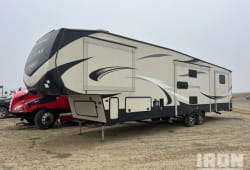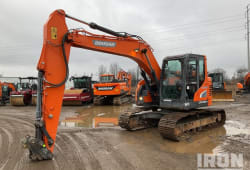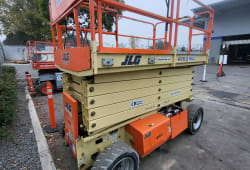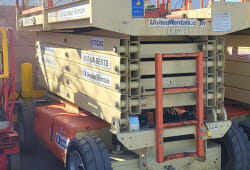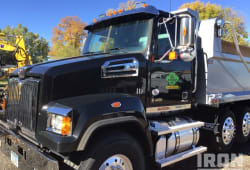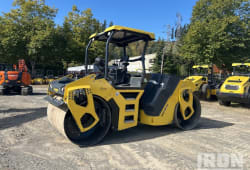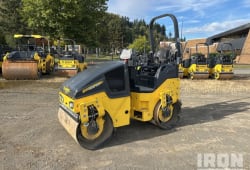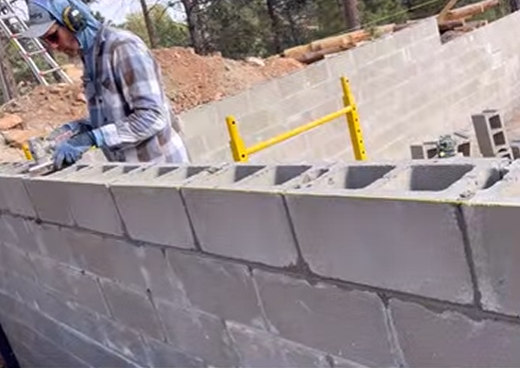Barndominium Construction Guide:Building Types for 2025
5 Min read
)
August 6, 2025
Barndominiums-often called "barndos"-are becoming one of the most popular alternative housing options in 2025. Combining the rustic charm of a barn with the modern comforts of a home, barndominiums offer affordability, flexibility, and style. Whether you're building one as a primary residence, a weekend getaway, or a multifunctional workshop-home combo, understanding barndominium construction is key to getting the most value out of your build.
In this guide, we’ll break down the best type of building for a barndominium, essential components, and the latest construction cost trends to help you plan your project with confidence.
What Is Barndominium Construction?
Barndominium construction refers to building a residential home that’s based on the framework of a barn or barn-style structure. Originally popular in rural areas and among horse owners, the modern barndo has evolved into a stylish, energy-efficient, and highly customizable dwelling.
Most barndominiums are built using metal or steel frames, but wood-framed structures are also common, especially when budget or regional building codes come into play. The process typically involves:
Laying a concrete slab foundation
Erecting the framing structure (metal or wood)
Adding roofing, siding, insulation, and interior finishes
Best Type of Building for a Barndominium
:format(webp))
So, what’s the best type of building for a barndominium?
The clear winner for most homeowners in 2025 is metal or steel frame construction. Here’s why:
Durability: Steel is resistant to rot, pests, and fire
Low maintenance: No need to worry about termites or warped wood
Design flexibility: Wide-open interiors with fewer load-bearing walls
Speed: Metal building kits can reduce construction time significantly
While pole barns and wood-framed buildings are still used-especially in DIY or low-budget builds-they may require more maintenance over time. For long-term durability and resale value, a steel building is often the best type of building for a barndominium.
Key Components of a Barndominium
A successful barndominium construction project involves several essential components. Each part plays a role in comfort, function, and cost:
1. Foundation
Most barndos are built on concrete slabs, offering a stable and moisture-resistant base.
In some regions, pier and beam foundations may be used.
2. Framing
Steel frames offer structural integrity and fire resistance.
Wood framing may be cheaper but is more prone to rot and insect damage.
3. Roofing and Siding
Metal roofs and siding are common, offering durability and a clean aesthetic.
Options include standing seam metal panels, corrugated steel, or insulated panels.
4. Insulation
Closed-cell spray foam or rigid board insulation is often used to regulate temperature and improve energy efficiency.
5. Interior Layout
Barndos usually feature open floor plans, lofts, and high ceilings.
Integration with a garage, shop, or storage area is common.
6. HVAC, Electrical, and Plumbing
These systems are just like any traditional home and should be installed by licensed professionals to meet code requirements.
Barndominium Construction Cost in 2025
One of the biggest reasons people choose a barndominium is the cost. While prices have risen slightly due to inflation and material demand, barndos still offer great value compared to traditional homes.
Average Barndominium Construction Cost in 2025
$120 to $165 per square foot (turnkey build with finishes)
DIY shell kits: As low as $30 to $45 per square foot
Basic shell + concrete slab: $60 to $85 per square foot
Cost Breakdown
Land: Varies widely by location
Site prep and foundation: $10,000-$30,000
Metal building kit: $20,000-$70,000+
Interior finish work: $50,000-$150,000+
Factors That Influence Cost
Size and layout Custom finishes and materials
Regional labor rates
Utility hookups (well, septic, electricity)
Pro Tip: Always budget 10-15% for unexpected expenses, especially if you're building in a rural area where utility access might be limited.
Popular Barndominium Floor Plans
:format(webp))
Barndominiums are all about versatility. Here are some trending layouts:
3-bed, 2-bath family homes with an attached garage/shop
Single-story open concepts for aging in place
Two-story barndos with a workshop or toy storage below and living space above
Modern rustic designs with large windows and wraparound porches
Whether you’re building 1,500 or 3,500 square feet, barndos can be tailored to fit your lifestyle and land.
DIY Barndominium Kits vs. Hiring a Builder
Thinking of doing it yourself? Here’s a quick comparison:
DIY Kits
Lower cost
More control over finishes
Requires time, tools, and experience
You’re responsible for permits and inspections
Professional Builder
Faster, turnkey process
Licensed work and code compliance
Higher overall cost
Less customization (depending on builder)
Many homeowners opt for a hybrid approach-purchasing a shell kit and hiring pros for the mechanicals and finish work.
Conclusion: Is a Barndominium Right for You?
Barndominium construction in 2025 continues to be one of the best ways to build a cost-effective, durable, and highly customized home. With the right building type-typically a steel frame-plus a solid understanding of the components and costs, you can create a home that's built to last and fits your lifestyle.
Looking to build your own barndo? Start by choosing a trusted builder or steel kit supplier, plan your budget wisely, and don't forget to check your local zoning and permit requirements. Your dream barndominium is closer than you think!
FAQ (Optional Add-On for SEO Boost)
Q: What is the cheapest way to build a barndominium?
A: DIY barndominium shell kits combined with minimal finishes and sweat equity are the cheapest way to build.
Q: Are barndominiums energy-efficient?
A: Yes, when properly insulated and sealed, barndominiums can be just as energy-efficient-if not more-than traditional homes.
Q: How long does barndominium construction take?
A: A turnkey build usually takes 4-6 months, but DIY projects can take longer depending on weather and contractor availability.


